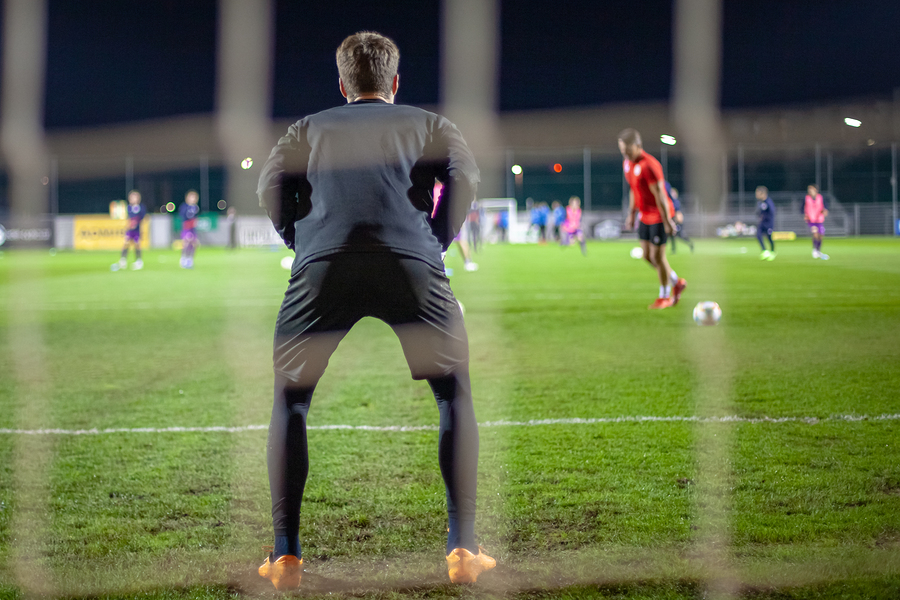
One of the core concepts of our Metuf model is that we break “performance preparation” down into five parts. There is some debate about the pros and cons of separating performance like this. After all, they’re all related to one another. For example it takes a certain level of motivation – a mental state – to improve muscle strength – a physical component. Our argument is that if you focus on each part as a separate entity then any “crossover” benefit that rubs off onto another area is a bonus to your improvement. Whereas lumping them all together can result in incorrectly assuming you’re doing more than you are. Decision making in sport is a great example of this. In my experience ‘in the trenches’ as a sport psychologist for the last 15 years decision making is rarely targeted by itself.
Specificity is Special
I often tell the anecdote of the coach who once told me he used to get his players to run up sand dunes in extreme temperatures in order (in his mind) to improve their mental toughness. Risky, risky, risky. Don’t get me wrong, I’m sure there are some nice mental benefits of doing this (the most obvious to come to mind is an improvement in the confidence of being able to ensure extreme conditions while exhausted) but that’s a very, very small part of good
Those familiar with our Metuf model will know that we use an analogy of the competitive athlete being like a 4 engines aeroplane. In this analogy, the actual main body of the plane is like health and wellbeing. Attached to this are the four engines. Each of which is a key aspects of sports performance. The two on the left wing are ‘below the neck’ in Technical Wisdom and Physical Capabilities. To two on the right wing are ‘above the neck’. They are Mental Toughness and Tactical Wisdom.
Tactical Wisdom is Decision Making in Sport Contexts
Recently a number of our 1-on-1 clients have been asking us for more and more input into their Tactical Wisdom. ‘TW’ is very tricky as in theory it’s entirely mental yet the coaching of these “in the moment” decisions is, and always wants to be, the domain of sporting coaches not a sport psychologists. This is one of the many reasons why it makes so much sense for us to work more directly with coaches.
I’m going to use two examples from different sports here to emphasise my point. First, the decision faced by a golfer whether to “lay up” short of a creek located just before the green or “go for it” by attempting to hit the ball directly over the creek onto the green. Second, the decision by a striker in football (soccer) when near the penalty area to “have a shot” or pass the ball to a teammate.
Risk Versus Reward
Both of these scenarios have what we call a “risk and reward” assessment to them. None of the four options mentioned are obviously terrible and therefore the goal is to train your mind to “make the best decision according to the specifics competitive situation”. Most decision making errors take place when the emotion of the moment trumps the competition situation. Here’s a clue about how to not let that happen (and yes, it requires a bit of hard work).
First, you’re much more likely to make an unemotional decision if it’s a scenario that’s been “mapped out” already. The more often it’s been mentally rehearsed beforehand, the better. This is best done by what we call the “If Blank Then Blank” exercise. Let’s go back to our two examples above.
Although there might seem like an overwhelming number of scenarios, if you really think about it there are probably only half a dozen or so. For example:
“If stroke play then lay up”.
“If match play then go for green”.
But maybe that’s too simple so these might be better:
“If stroke play and a par 5 then lay up”.
“If stroke play and windy then lay up”.
“If stroke play and leading then lay up”.
“If stroke play and less than 3 shots within the lead then lay up”.
“If any another situation then go for the green”.
And for the other example, the footballer:
“If ball is on / near my right foot with no defender near then shoot”.
“If any other scenario then pass”
“If Blank Then Blank”
Human brains are remarkable at learning these “If Blank Then Blank” right from when we’re newborns. Think about it; “If hungry then cry”. And it carries on all the way to adulthood. “If red or amber light then slow down and stop”. Certain commentators have and continue to object to the fact that this exercise appears to bring “thinking” into what really want to be instinctive actions.
Our answer to this is simple. There’s no escaping the fact that certain moments in certain sports require a lot of decision making. The “If Blank Then Blank” exercise simply decreases the chances of a brain explosion while under pressure. In our experience, the greatest benefit of this is the reduction of one of performance excellence’s biggest threats – indecision.
I’m not sure if I’m taking the word too literally but indecision means a slowing of a decision due to being “in the decision”. Basically the decision making process (risk versus reward) is taking longer as it’s new.
In fact, indecision is so damaging to performance it would be fair to say that you’re better off making the wrong decision quickly and with confidence rather than the right one slowly and full of self-doubt.
Gareth J. Mole (sport psychologist)
If you’d some help to improve the decision making aspects of what you do please contact us by filling in this form. We typically reply in less than 24 hours.




